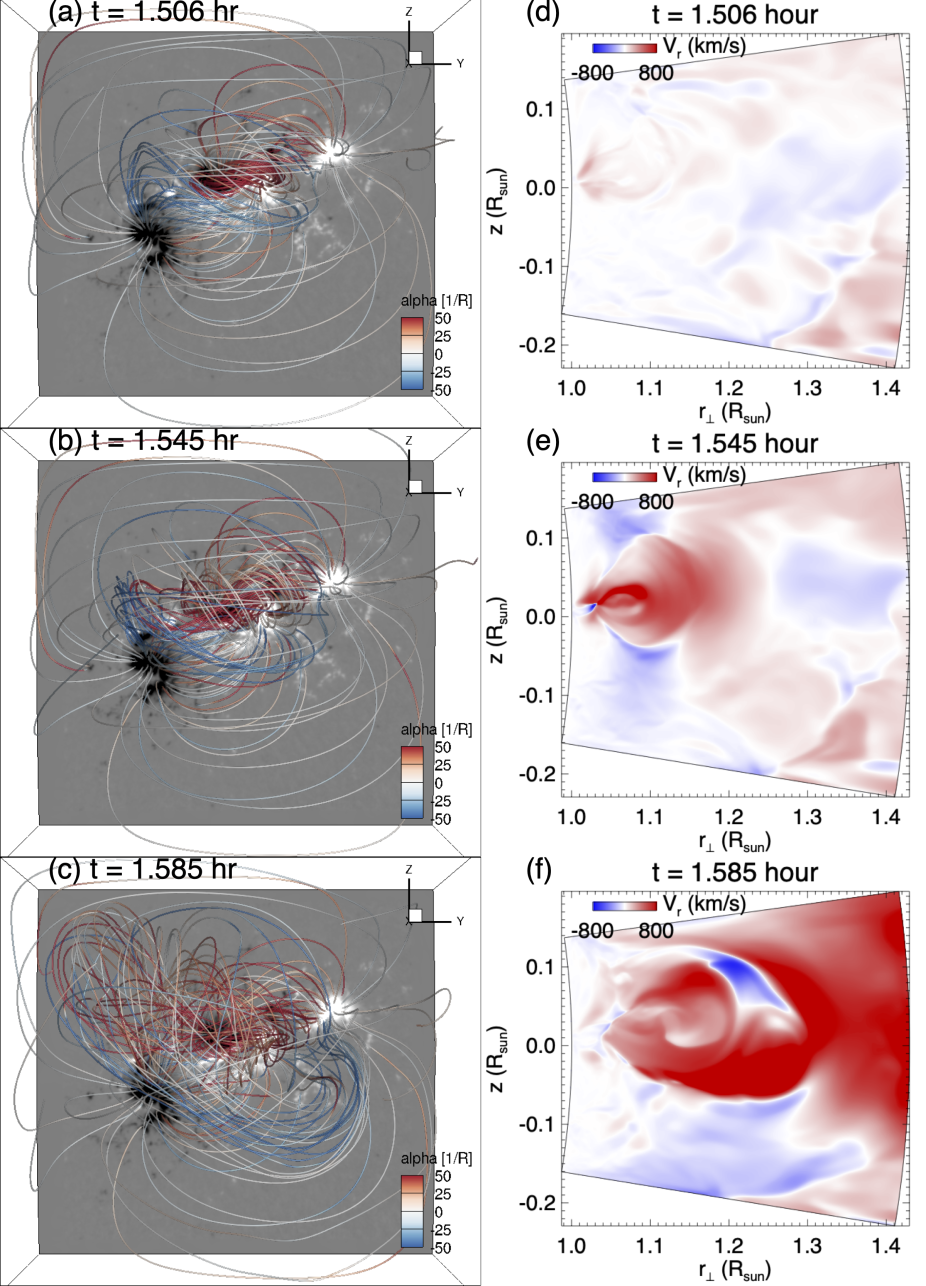
Result from the MHD simulation of the 2011-02-15 coronal mass ejection (CME) event of Active Region (AR) NOAA 11158: (a,b,c) Snapshots of the magnetic field evolution showing 3D field lines colored with the magnetic twist rate at three time instances during the onset of the eruption, (d,e,f) snapshots of the radial velocity in the middle meridional cross-section of the domain at the corresponding times of the 3D magnetic field images in the left column.
The Astrophysical Journal: We present a boundary data-driven magneto-hydrodynamic (MHD) simulation of the 2011-02-15 coronal mass ejection (CME) event of Active Region (AR) NOAA 11158. The simulation is driven at the lower boundary with an electric field derived from the normal magnetic field and the vertical electric current measured from the Solar Dynamics Observatory (SDO) Helioseismic Magnetic Imager (HMI) vector magnetograms. The simulation shows the build up of a pre-eruption coronal magnetic field that is close to the nonlinear force-free field (NLFFF) extrapolation, and it subsequently develops multiple eruptions. The sheared/twisted field lines of the pre-eruption magnetic field show qualitative agreement with the brightening loops in the SDO Atmospheric Imaging Assembly (AIA) hot passband images. We find that the eruption is initiated by the tether-cutting reconnection in a highly sheared field above the central polarity inversion line (PIL) and a magnetic flux rope with dipped field lines forms during the eruption. The modeled erupting magnetic field evolves to develop a complex structure containing two distinct flux ropes and produces an outgoing double-shell feature consistent with the Solar TErrestrial RElations Observatory B / Extreme UltraViolet Imager (STEREO-B/EUVI) observation of the CME. The foot points of the erupting field lines are found to correspond well with the dimming regions seen in the SDO/AIA observation of the event. These agreements suggest that the derived electric field is a promising way to drive MHD simulations to establish the realistic pre-eruption coronal field based on the observed vertical electric current and model its subsequent dynamic eruption.